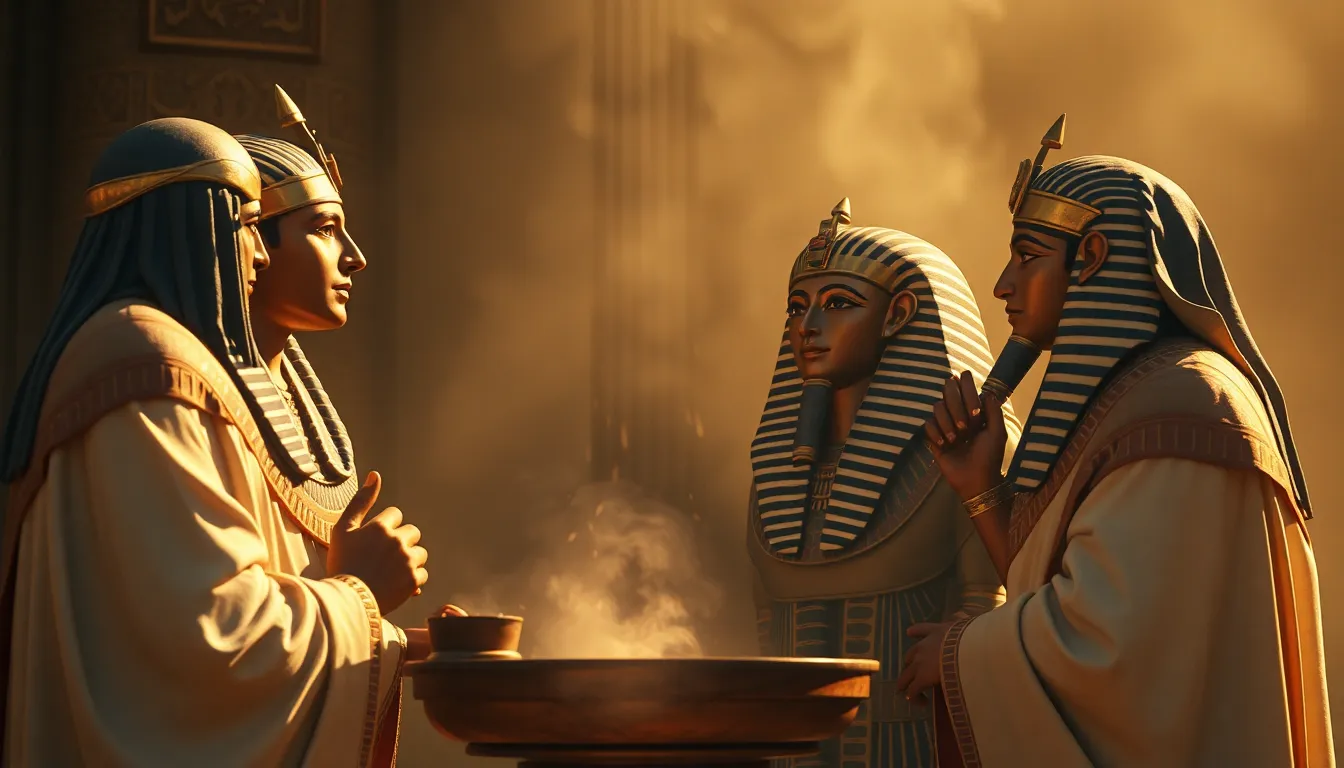The Rituals of the Opening of the Mouth Ceremony
I. Introduction
The Opening of the Mouth Ceremony is a significant ritual in ancient Egyptian funerary practices, aimed at reanimating the deceased’s senses and granting them the ability to speak and eat in the afterlife. This ceremony holds deep historical significance, reflecting the ancient Egyptians’ beliefs about life, death, and the afterlife.
The purpose of this article is to explore the rituals associated with the Opening of the Mouth Ceremony, its historical context, symbolism, and its relevance in both ancient and modern times.
II. Historical Context
The origins of the Opening of the Mouth Ceremony can be traced back to the early dynastic period of ancient Egypt, becoming a crucial aspect of funerary rites. Initially, the ritual was performed to ensure the deceased could partake in the offerings and sustenance provided by the living.
Over time, the rituals evolved significantly, adapting to changes in religious beliefs and practices. Key figures in this ceremony included priests, who were tasked with the sacred duties of performing the rituals, and family members of the deceased who would oversee the proceedings.
III. Symbolism and Meaning
The Opening of the Mouth Ceremony carries profound spiritual significance. It symbolizes the rebirth of the deceased, awakening their faculties for the afterlife. The act of opening the mouth is not merely physical; it embodies a connection to the divine and facilitates communication with the gods.
This ceremony is intrinsically linked to concepts of the afterlife and immortality, as it is believed that the deceased must be able to speak and eat to sustain themselves in the next world. The symbolic representation of speech and sustenance plays a crucial role in ensuring the deceased’s journey through the afterlife is successful.
IV. Preparation for the Ceremony
Preparation for the Opening of the Mouth Ceremony involved meticulous planning and specific materials. The primary tools used included:
- Ritual instruments, such as the adze and the ceremonial knife.
- Offerings of food and drink for the deceased.
- Incense and oils to purify the space.
The role of priests was central to the ceremony. They acted as intermediaries between the living and the divine, conducting the ritual with precision and reverence. This included ritual cleansing, where both the priests and the offerings were purified, as well as the presentation of offerings to the deceased.
V. The Ritual Process
The Opening of the Mouth Ceremony involved several key steps to ensure its effectiveness. Here is a step-by-step description of the process:
- Initial Cleansing: Both the priests and the ritual space were cleansed to ensure purity.
- Presentation of Offerings: Food, drink, and other offerings were laid out before the deceased.
- Incantations and Prayers: Priests recited specific incantations to invoke the presence of the gods.
- Use of Ritual Instruments: The main act involved using a ceremonial adze to touch the mouth of the deceased, symbolically opening it.
- Final Blessings: The ceremony concluded with blessings for the deceased’s journey into the afterlife.
Each of these steps carried specific meanings, reinforcing the beliefs surrounding the afterlife and the need for the deceased to be equipped for their new existence.
VI. Variations Across Different Periods and Regions
Throughout the history of ancient Egypt, the Opening of the Mouth Ceremony exhibited variations. During the Old, Middle, and New Kingdoms, the rituals adapted to reflect the changing religious landscapes:
- Old Kingdom: The ceremony was more straightforward, focusing mainly on the physical act of reanimation.
- Middle Kingdom: The rituals became more elaborate, incorporating more complex incantations and offerings.
- New Kingdom: The ceremony was highly ceremonial, with significant emphasis on the role of the gods and the afterlife beliefs.
Regional variations also arose, influenced by local customs and beliefs. Additionally, interactions with other cultures, such as the Nubians and Greeks, introduced new elements into the rituals.
VII. The Opening of the Mouth in Modern Times
Today, the Opening of the Mouth Ceremony is viewed through the lens of archaeology and Egyptology. Scholars and enthusiasts alike appreciate its complexity and significance in understanding ancient Egyptian beliefs about life and death.
In contemporary cultural practices, elements of the ceremony can be seen in various forms, such as reenactments at museums or in cultural festivals. The ongoing impact of archaeology and Egyptology continues to shed light on these ancient rituals, deepening our understanding of their significance.
VIII. Conclusion
In summary, the Opening of the Mouth Ceremony is a vital aspect of ancient Egyptian funerary practices, rich in symbolism and historical significance. Its evolution over time reflects broader changes in beliefs about the afterlife and the divine.
The lasting legacy of this ceremony invites us to explore further the intricate rituals of ancient Egypt and their profound connections to the human experience of life and death.
We encourage readers to delve deeper into the fascinating world of ancient Egyptian rituals and the rich tapestry of beliefs that shaped one of history’s most enduring civilizations.




